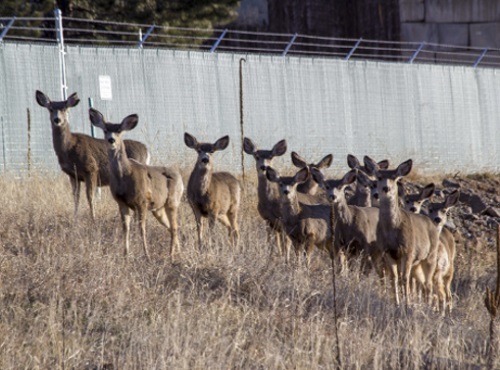A state government report is calling for increased funding for transportation projects that protect big game habitats and corridors and prevent thousands of vehicle-wildlife crashes each year on Colorado’s roads.
[Above photo by the Colorado DOT]
The Colorado Department of Transportation and the Colorado Department of Natural Resources authored the Big Game Policy Report, subsequently released by Governor Jared Polis (D) on September 29.
A statement from the governor’s office said the report seeks to “prioritize state policy, coordination and investment to support our wildlife and ecosystems.”
The report notes that the effects of climate change, increased industrial, residential construction, plus ongoing infrastructure development increase the number of situations putting wildlife in conflict with people. The most glaring examples of such conflicts are the estimated 4,000 vehicle crashes with wildlife that cost an estimated $80 million each year in Colorado.
The Big Game Policy Report served as a follow-up to an executive order Gov. Polis issued in 2019 directing Colorado DOT to incorporate wildlife protection measures into “all levels of its planning process, to the greatest extent possible.”
The Colorado DOT already planned to make road improvements to U.S. 160 between Pagosa Springs and Durango when it decided to incorporate wildlife protection elements. The busy stretch of highway has been the scene of more than 350 big game-vehicle collisions in the last 10 years as drivers make their way to the Chimney Rock National Monuments.
The project, expected to wrap up this winter, now includes a wildlife overpass and underpass, high-deer fencing, and “jump out” ramps within the two-mile project area. The fencing helps “funnel” the moving herds toward the overpass or underpass, where they can safely cross the busy highway. The earthen ramps are inside the fencing and allow the animals to safely escape traffic.
By including wildlife elements into planned projects, “it gives us a bigger bang for our buck,” said Lisa Ann Schwantes, a Colorado DOT regional communications manager.
“We look at the projects already identified that need to be done, and we overlap them with wildlife projects and marry them together,” she said.
Though incorporating wildlife protection elements into existing planned projects can be cost-effective, the costs still add up. The U.S. 160 project has a total price tag of $12 million, $5.4 million of which include just the construction costs for the wildlife protection features.
The report points out that, while Colorado DOT continues to look for ways to protect big game and drivers from each other, the agency has no dedicated funding source for such wildlife projects – one reason why the new report calls on the state legislature to find new money to support such projects.
“While progress has been made, the General Assembly should prioritize new funding for transportation projects identified by CPW (Colorado Parks and Wildlife) and Colorado DOT that provide a clear benefit to wildlife populations and human health,” the report states.

